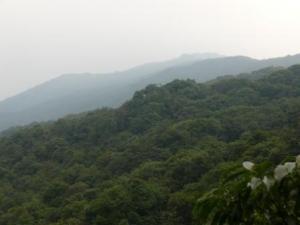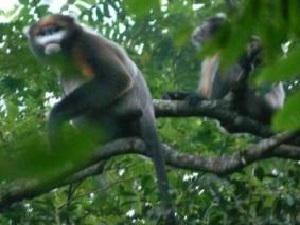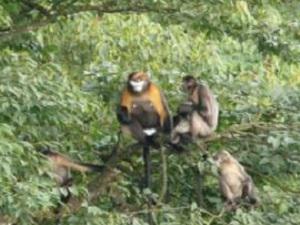Zuo Fu Xiang
Our aim is to provide the actual distribution status, specify the threats and recommend future conservation strategies for the gray snub-nosed monkey.

Typical habitat of the gray snub-nosed monkey.
Gray snub-nosed monkeys Rhinopithecus brelichi, categorized as Endangered on the IUCN Red List, are endemic to Mt Fanjing area in Guizhou, China. This primate was first described by Thomas in 1903 but it was believed to be extinct because no further information about its occurrence was reported following its initial discovery. The confirmation that the species was extant came in 1967. Then, Fanjingshan Nature Reserve (FNR) was founded in 1978 for protecting this rare primate. Then, although a few surveys on population distribution and population census were carried in early 1980’s, none of these investigates were conducted in the whole range of the species. From 1988 to 1993, one systematic survey was carried out by the FNR, which focused on the population distribution, size and ecology of this species. Nevertheless, after this comprehensive survey, there is no any survey during the last 15 years. Therefore, the population trend is still unknown.

Gray snub-nosed monkeys.
Now, I am performing a research program, which aimed to enhance the still rudimentary knowledge of the natural history, on Yangaoping sub-population in FNR since August 2007. During the field, I have observed many human activities (such as illegal exploiting mine, cable car for tourism, poaching for wild deer) in FNR and believed that these activities threaten the species’ survival. Therefore, I feel it is necessary to launch a comprehensive survey to evaluate the population distribution and conservation status.

This project is designed to:
(1) establish the actual (current) sub-population size of Rhinopithecus brelichi;
(2) specify the threats that affect its survival;
(3) recommend future conservation strategies for this species. This is a pioneer work for site-specific conservation efforts, and for further studies on the little known species in the world.